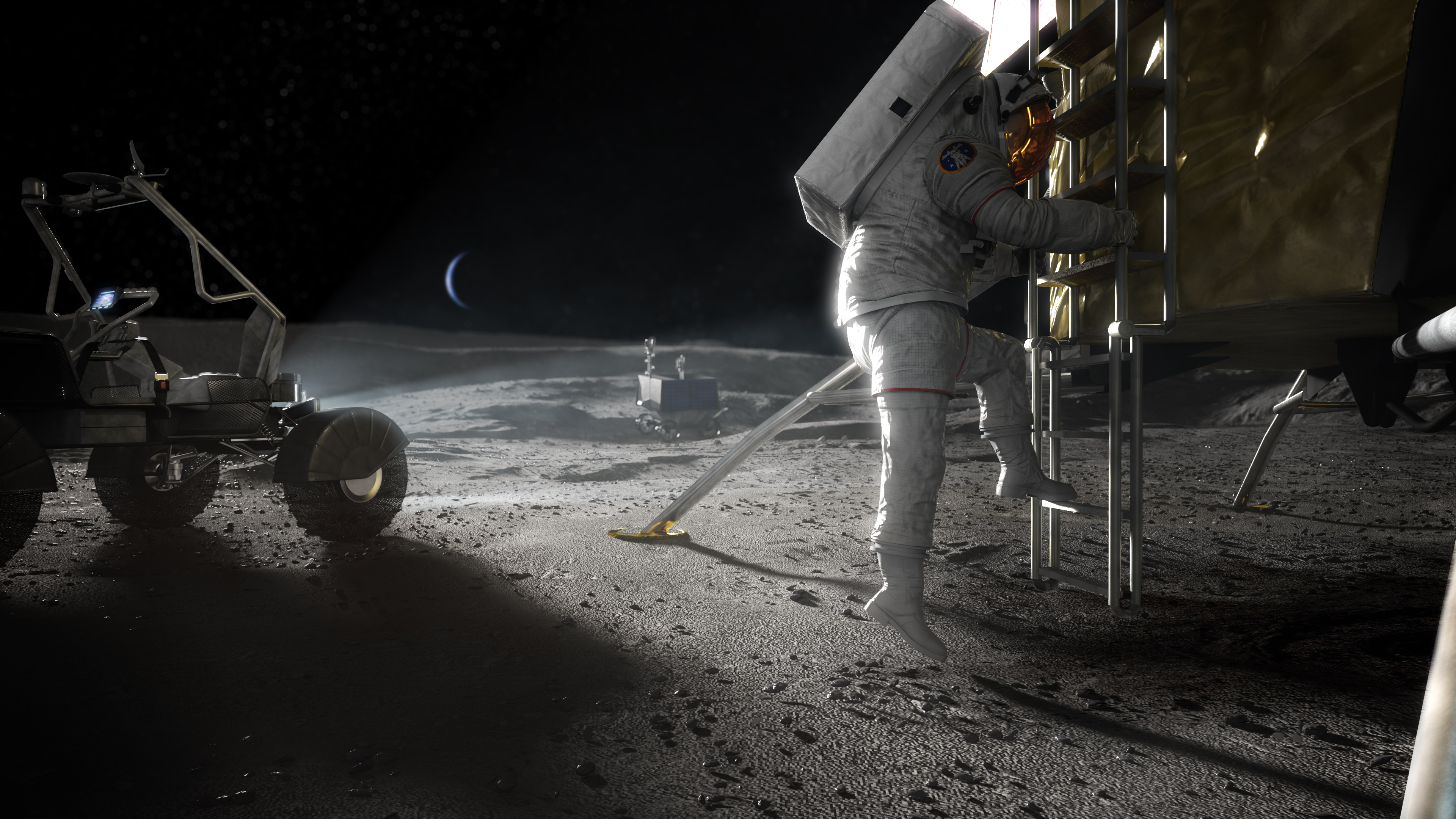Space Mountain at 50: Five nods to NASA from the Walt Disney World ride
When the ride opened on Jan. 15, 1975, an Apollo moonwalker was its first passenger, NASA's insignia was on display and Space Mountain was dedicated to opening the new frontier.
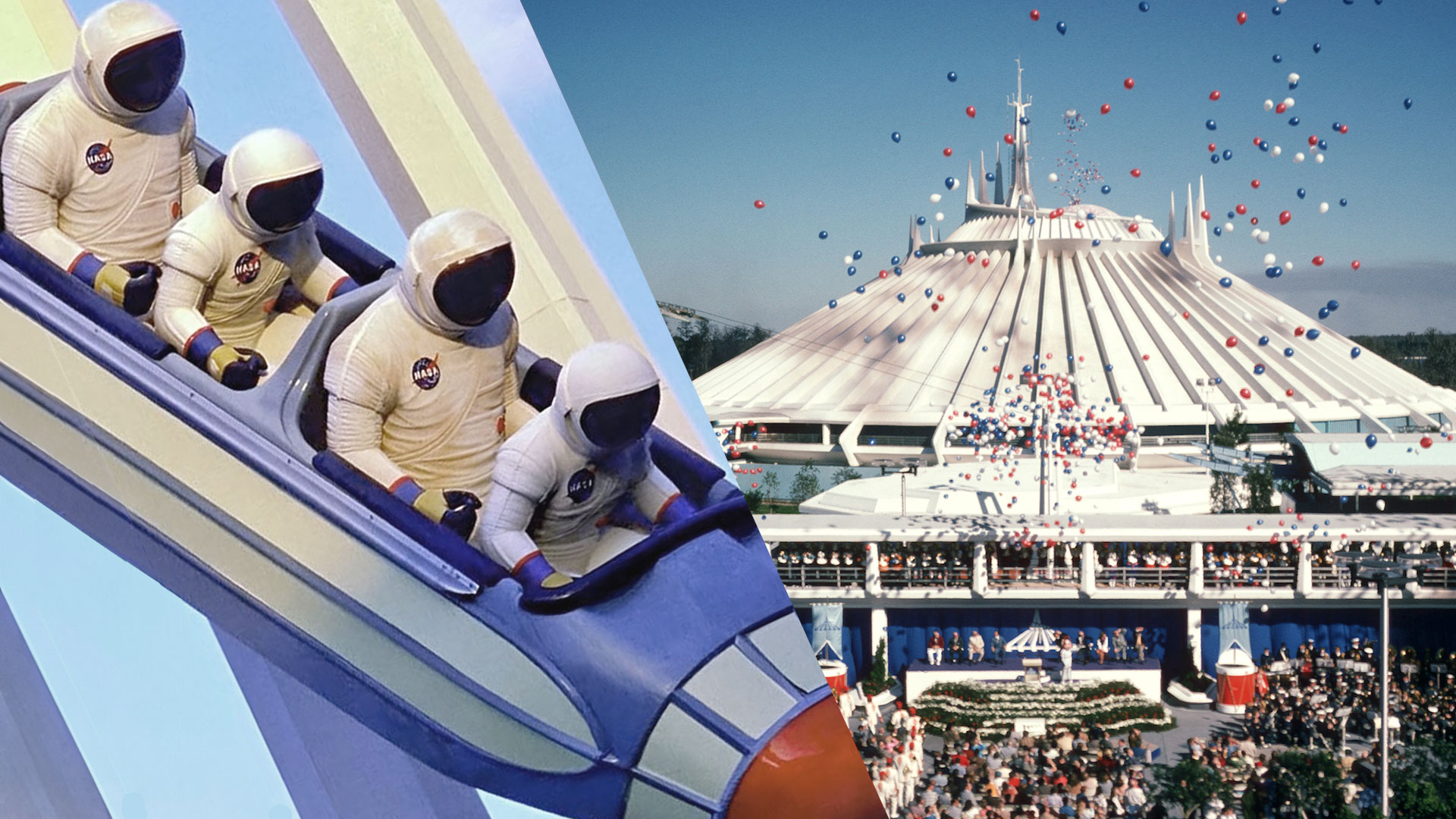
"We astronauts are here today to salute all those who made our trip into space possible. They have permitted us to see the Earth as a precious blue jewel in the blackness of space. Now all of us may enjoy this sense of wonder because of Walt Disney."
With those words 50 years ago today (Jan. 15), Apollo 15 moonwalker Jim Irwin opened Space Mountain at Walt Disney World's Magic Kingdom in Florida. Later to be reproduced at other Disney theme parks, this was the original — the first roller coaster intended to give the public the same feeling that only astronauts had experienced up until then.
"Blast off on a rip-roaring rocket into the furthest reaches of outer space on this roller-coaster ride in the dark," reads the current description of Space Mountain on the Walt Disney World Resort website.

In 1975, however, the very idea for such a ride preceded the existence of the technology needed to build it. First proposed by Disney and sketched out by Imagineer John Hench in 1964, construction on Space Mountain did not begin until Dec. 15, 1972, just as the last Apollo astronauts to walk on the moon were on their way back to Earth. It was also six years after the death of Walt Disney.
Related: The Apollo Program: How NASA sent astronauts to the moon
"Walt had a dream," said Irwin just before thousands of doves were released, daytime fireworks were launched and 50,000 red, white and blue balloons climbed into the sky. "Today we see the results of that dream."
Looking at the ride today, while certainly still a thrill, it has little resemblance to actual spaceflight. But in the 50 years that Space Mountain has been running, there have been and still are several nods to NASA and real space exploration. Here are five such connections, from both behind the scenes and on the ride.
Get the Space.com Newsletter
Breaking space news, the latest updates on rocket launches, skywatching events and more!
1. NASTRAN
Space Mountain was one of the first computer-controlled roller coasters. If the ride's "space shuttles" (or "rocket sleds") approached each other too closely, the computers slowed or stopped the vehicles.
But that's not the only way WED Enterprises (today, Walt Disney Imagineering Research and Development) used computers to ensure riders' safety.
When working on the design for the support structure for Space Mountain's dual tracks, the Imagineers needed it to be strong but not wastefully overbuilt. That is when they learned of the NASA Structural Analysis Program, or NASTRAN. An offshoot of the software used to design air and spacecraft, NASTRAN enabled the Imagineers to digitally model and test the ride track before building it.

"In this technique, engineers create a mathematical model of the aeronautical or space vehicle and 'fly' it on the ground by means of computer simulation. The technique enables them to study performance and structural behavior of a number of different designs before settling on the final configuration and proceeding with construction," wrote James Haggerty in "Spinoff 1977," an annual report put out by NASA about how its research and technologies are being put to use by industry and others outside of the space program.
2. From computers to outer space
In 1975, the RCA Corporation was working on the development of closed-circuit television and other various subsystems for NASA's then-upcoming space shuttle program. It was also the presenting sponsor for Space Mountain.
"Naturally, the basic purpose of Space Mountain from the company's standpoint is to give the public a vivid picture of what RCA is all about and what it has accomplished in such diverse areas of as space exploration, electronic communications and home entertainment," said Mort Gaffin, RCA's director for corporate identification and graphics and project manager for Space Mountain, in the February/March 1975 issue of the company's newsletter, "Communicate."
In fact, it may be because of RCA that Space Mountain launched the public on rockets and not motherboards. Initially, Imagineers Hench and Marty Sklar approached the company about sponsoring a ride that would take guests on a journey through a computer. It was only after RCA rejected that idea did Hench pick up on Disney's desire for a spaceflight experience, leading to RCA coming on board for $10 million.
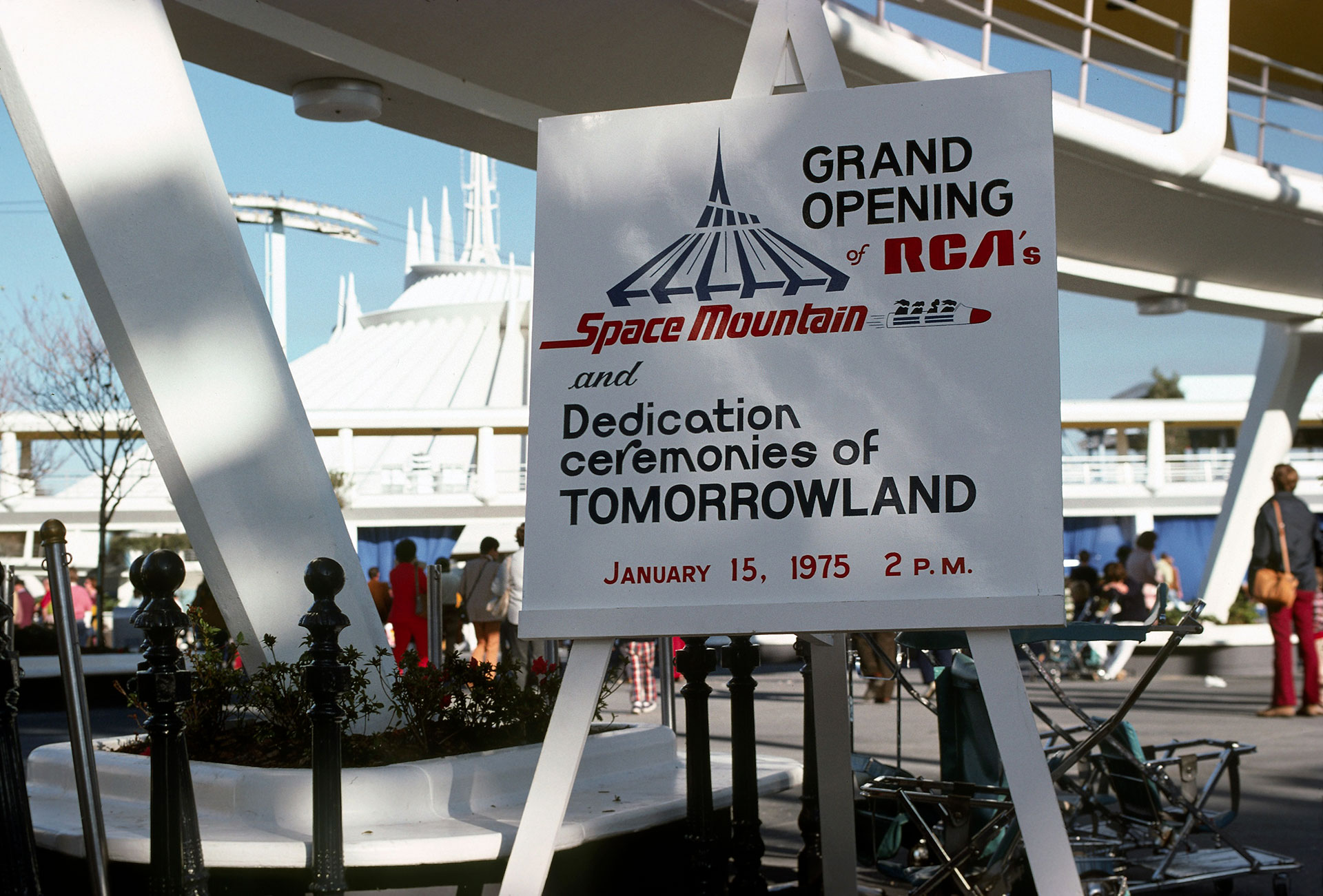
On Space Mountain, riders saw astronauts working on an RCA-built Atmosphere Explorer Satellite and an orbiting laboratory being assembled remotely using TV systems furnished by RCA.
A tall pylon installed at the entrance to Space Mountain displayed the RCA logo at its top and included the only direct reference to NASA. A full-size ride vehicle was suspended from the monument, complete with four astronaut figures. The spacesuits each astronaut rider is wearing had the NASA insignia on its chest.
(RCA's sponsorship ran until 1993. The pylon was modified to show a three-seat vehicle in 1989, consistent with the change to the seating on the ride itself. Five years later, the pylon was removed and replaced with one of a different design.)
3. 'One Giant Step'
At the base of the RCA pylon was a metal plaque "presented by missile, space and range pioneers."
"Dedicated to the men and women whose skills, sacrifice, courage and teamwork opened the door to the exploration of man's exciting new frontier outer space. Because they dared to reach for the stars and the planets, man's knowledge of his universe, Earth and himself has been greatly enriched," read the plaque, which was titled "One Giant Step."
It was one of those astronauts, Irwin, who took the first "small step" (or "giant leap," depending on your perspective) onto Space Mountain on opening day, as the ride's first passenger.
"It's almost as rough as the ride on the Saturn V rocket," the Apollo 15 lunar module pilot said in an interview with RCA, referring to his ride to the moon.
Related: Saturn V: The mighty U.S. moon rocket
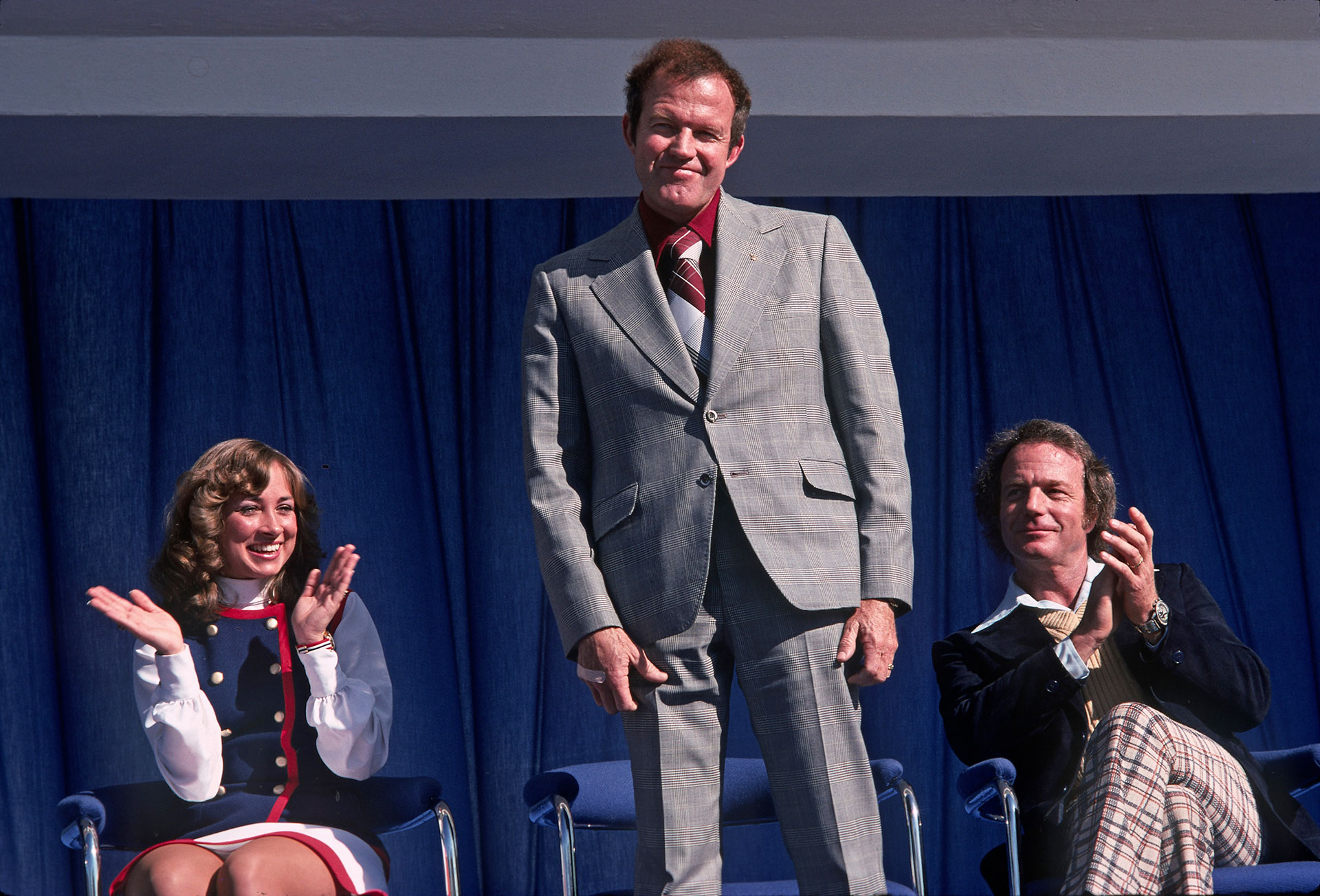
Joining Irwin at the ceremony were Mercury astronauts Scott Carpenter and Gordon Cooper. Carpenter had been the second American to orbit Earth in 1962; Cooper followed him as the last "original" astronaut to fly a year later and then commanded NASA's Gemini 5 mission in 1965.
In 1973, Cooper joined WED Enterprises to help develop Epcot and put the final touches on Space Mountain, the latter of which he said offered a "realistic feeling" of what it felt like to fly into space. He also recorded a video that guests saw when queuing up for the ride, explaining what they were about to go through and giving them the chance to exit should they change their mind.
4. Rocket to the Moon
Prior to Space Mountain, Disney's first space-themed attraction was "Rocket to the Moon." Located in California as part of Disneyland's Tomorrowland (and later reproduced as "Flight to the Moon" at Walt Disney World in Florida in 1971), the show was developed with NASA's assistance. The attraction was re-themed to "Mission to Mars" at both parks within months of Space Mountain opening at the Magic Kingdom in 1975.
There is now a reference to the since-closed Mission to Mars on a panel in Space Mountain's queue, but it is another sign and a different "rocket to the moon" that serves as a nod to real space history.
Earlier in the line for the ride, a backlit billboard lists "Active Lunar Stations" accessible from "Starport Seventy-Five" (the fictional setting for Space Mountain). In addition to science fiction and Disney-inspired names, the third entry reads, "TRNQ-ARMSTRONG Interplanetary."
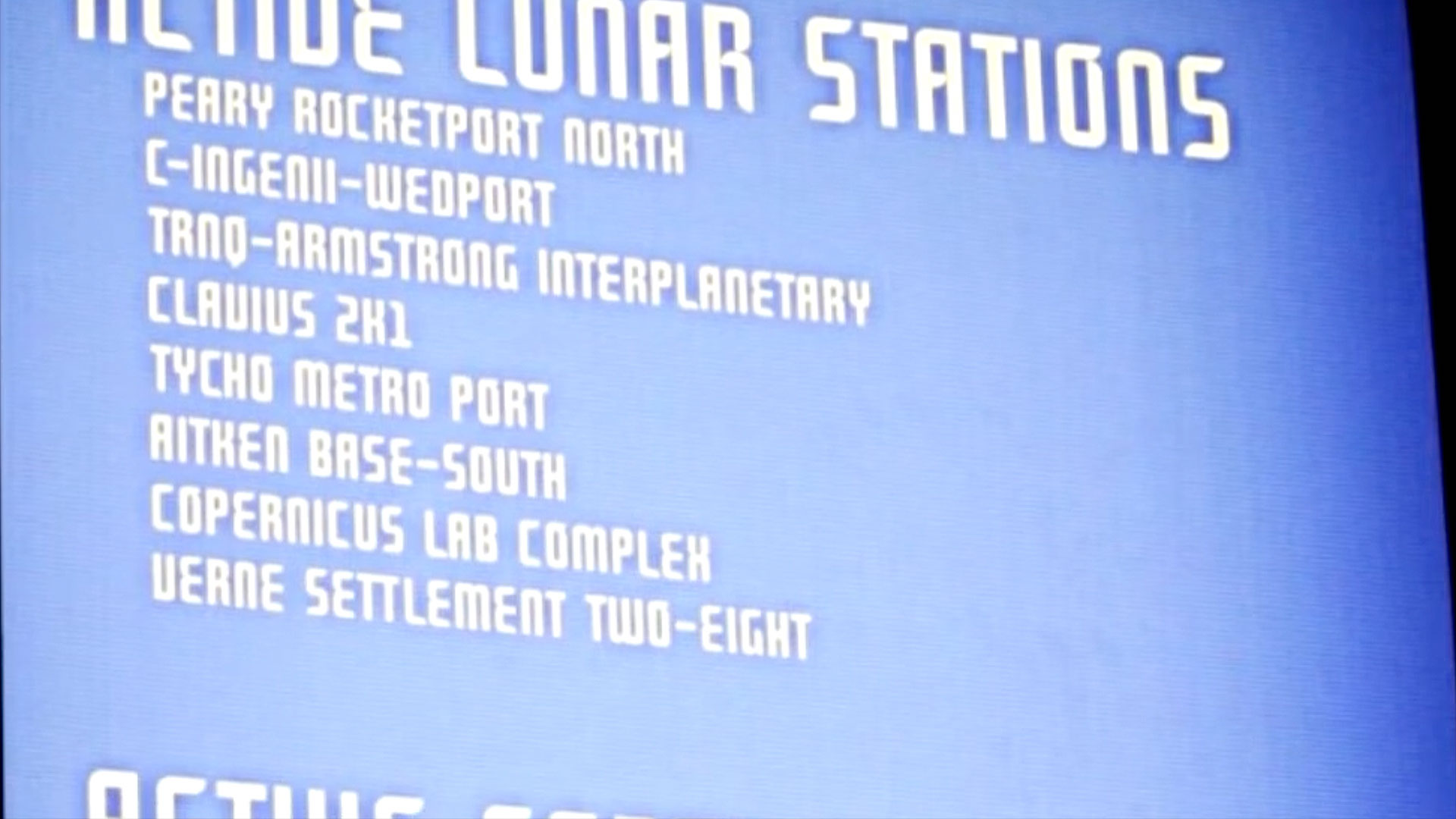
If not obvious, this is a tribute to Apollo 11 commander Neil Armstrong, who was the first person to walk on the moon at Tranquility Base in 1969.
(In 2005, the real Armstrong helped re-open Space Mountain at Disneyland after it underwent two years of renovations.)
5. Space (Race) Mountain
The festivities marking the opening of Space Mountain was not the only time that real space travelers met at the fictional starport. Less than a month later, the attraction became the rendezvous point for two crews set to shake hands in orbit.
In 1975, the space race between the United States and Russia had all but come to a close (the moon's surface being the finish line), but the two countries were still Cold War rivals. So it was a big deal when astronauts and cosmonauts came together during the first joint American and Russian space mission in July 1975.
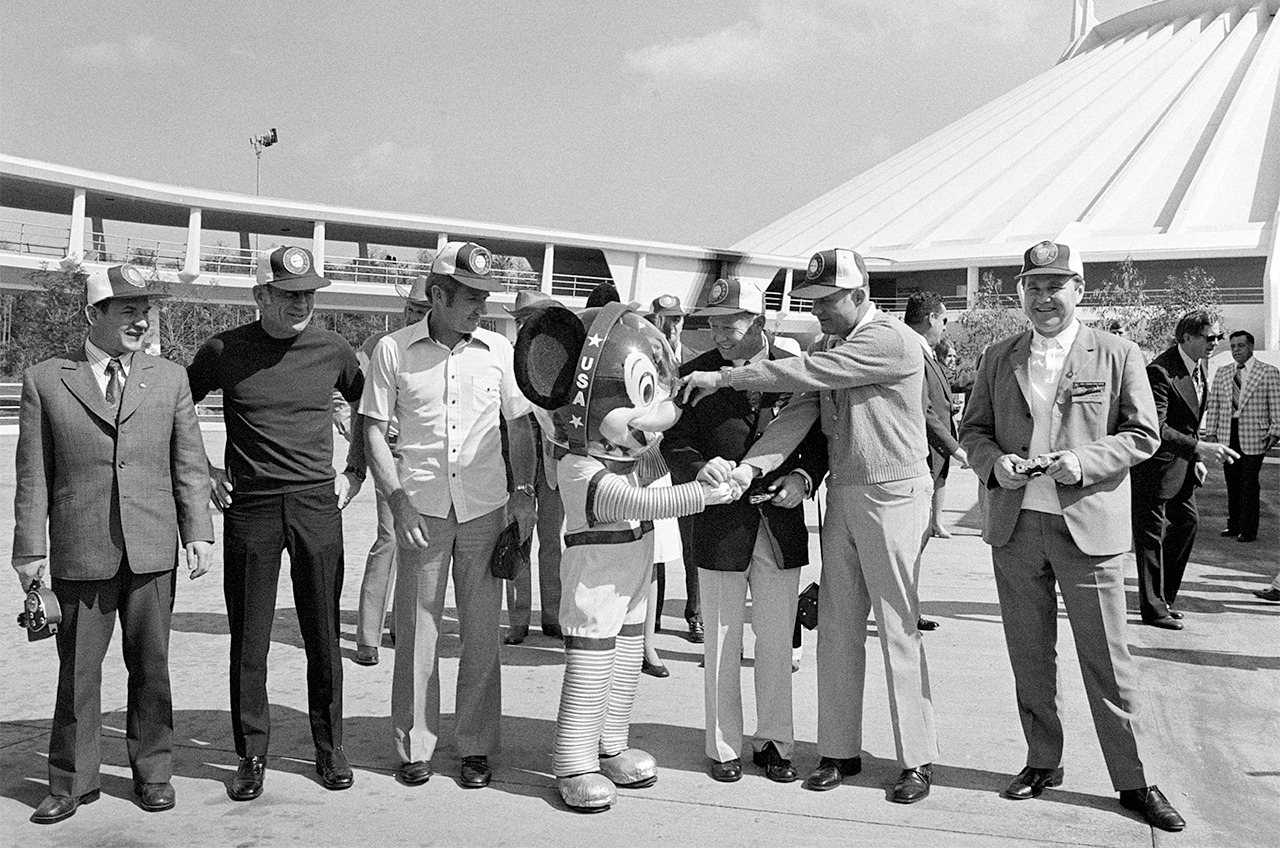
Five months before they launched into space, the five members of the Apollo-Soyuz Test Project (ASTP) visited Walt Disney World, where they rode the newly debuted Space Mountain. The Feb. 9, 1975 visit by NASA astronauts Thomas Stafford, Vance Brand and Deke Slayton and Russian cosmonauts Alexei Leonov and Valery Kubasov was a chance for both crews to relax and generate some publicity before the Russians reported for their last training session in Houston.
Still laughing soon after getting off Space Mountain, Leonov described the ride as "a real nice integrated simulator" for their upcoming mission.
Follow collectSPACE.com on Facebook and on X at @collectSPACE. Copyright 2025 collectSPACE.com. All rights reserved.
Join our Space Forums to keep talking space on the latest missions, night sky and more! And if you have a news tip, correction or comment, let us know at: community@space.com.

Robert Pearlman is a space historian, journalist and the founder and editor of collectSPACE.com, a daily news publication and community devoted to space history with a particular focus on how and where space exploration intersects with pop culture. Pearlman is also a contributing writer for Space.com and co-author of "Space Stations: The Art, Science, and Reality of Working in Space” published by Smithsonian Books in 2018.In 2009, he was inducted into the U.S. Space Camp Hall of Fame in Huntsville, Alabama. In 2021, he was honored by the American Astronautical Society with the Ordway Award for Sustained Excellence in Spaceflight History. In 2023, the National Space Club Florida Committee recognized Pearlman with the Kolcum News and Communications Award for excellence in telling the space story along the Space Coast and throughout the world.

